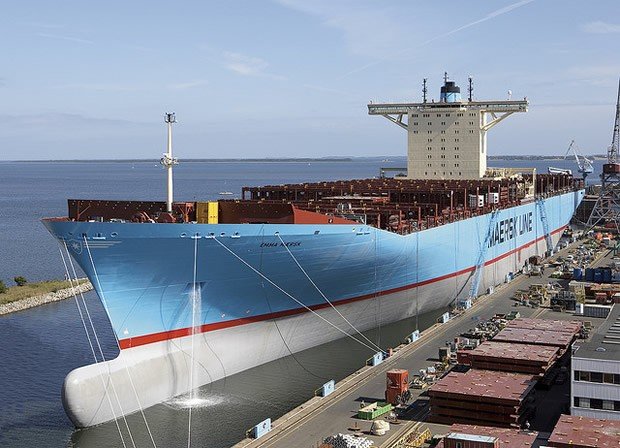
The maritime industry, known for its unpredictable challenges, occasionally experiences incidents that capture global attention. One such incident involved the Emma Maersk, one of the world’s largest container ships. In this article, we delve into what happened to the Emma Maersk, the causes behind the incident, the response efforts, and the lessons learned from this notable event.
Overview of the Emma Maersk
1.1 The Vessel
The Emma Maersk, launched in 2006, was one of the largest container ships in the world at the time of its construction. Measuring over 1,300 feet in length and with a capacity of approximately 15,000 twenty-foot equivalent units (TEUs), the vessel was part of the Maersk Line fleet, renowned for its size and efficiency.

The Incident
2.1 Incident Details
On February 1, 2013, while en route from the Suez Canal to the port of Algeciras, Spain, the Emma Maersk encountered propulsion problems in the Red Sea. The ship’s engine malfunctioned, leading to a loss of power and subsequently leaving the vessel adrift.
Maersk said “On 1 February 2013, Emma Maersk, currently Maersk Line’s largest container vessel, experienced an ingress of water into the engine room. She had just commenced her southbound transit through the Suez Canal en route to Asia. The captain decided to terminate the planned voyage and go alongside the nearby Suez Canal Container Terminal (SCCT). Whilst the exact cause of the incident is still being investigated, it has been confirmed that the water came in through a breach in the stern thruster tunnel.
According to Captain Marius Gardastovu, there was never any real danger or panic at any point. “Of course it is a shocking experience when you look back and consider what could have happened,” he says. “But given the circumstances, everything was handled as well as possible because of a close-knit crew who knew exactly what to do.””
She was loaded with containers equivalent to 13,537 TEU of which 6,425 were full.
2.2 Response Efforts
In response to the incident, emergency response teams were dispatched to the Emma Maersk to assess the situation and provide assistance. Tugboats were deployed to tow the vessel to a safe location, away from potential hazards such as reefs or shipping lanes. Ultimately, the ship was successfully brought to port for repairs.
Causes and Lessons Learned
3.1 Engine Failure
The primary cause of the incident was an engine failure on the Emma Maersk. The precise details of the engine failure have not been disclosed publicly. However, it serves as a reminder of the complex machinery and systems that power large vessels and the potential for technical issues to arise.
3.2 Importance of Maintenance and Reliability
The incident highlighted the criticality of regular maintenance and the need for robust reliability measures for ships of such scale. Ensuring proper inspection, servicing, and testing of engines, propulsion systems, and other critical components are essential to prevent malfunctions and mitigate the risk of similar incidents.
3.3 Emergency Response and Contingency Planning
The response efforts demonstrated the importance of having well-prepared emergency response plans and the capacity to mobilize resources swiftly. Prompt action, effective communication, and collaboration between stakeholders were crucial in mitigating potential risks and safely resolving the incident.
Impact on the Industry
4.1 Safety and Operational Enhancements:
The incident prompted the maritime industry to revaluate safety protocols and implement operational enhancements. Ship operators and regulatory bodies have focused on enhancing maintenance practices, increasing redundancy in critical systems, and improving emergency response preparedness to minimize the occurrence and impact of similar incidents.
4.2 Engineering Advances
The Emma Maersk incident served as a catalyst for further advancements in ship engineering. The incident underscored the need for ongoing research and development to enhance propulsion systems, engine reliability, and fuel efficiency. Manufacturers have since explored innovative technologies and materials to improve vessel performance and reduce environmental impact.
4.3 Crew Training and Competency
Crew training and competency development have also gained significance following the Emma Maersk incident. Ensuring that seafarers receive comprehensive training on emergency response procedures, engine operation, and equipment maintenance is crucial for enhancing onboard safety and response capabilities.
The incident involving the Emma Maersk shed light on the complexities and challenges faced by giant container ships. While engine failures can occur, the incident highlighted the importance of robust maintenance practices, emergency response preparedness, and ongoing industry collaboration to enhance vessel safety and reliability. The maritime industry has responded proactively, implementing measures to prevent similar incidents and improve operational efficiency. The lessons learned from the Emma Maersk incident continue to shape the industry, ensuring that safety remains a top priority and that vessels are better equipped to navigate the challenges of the open seas.




